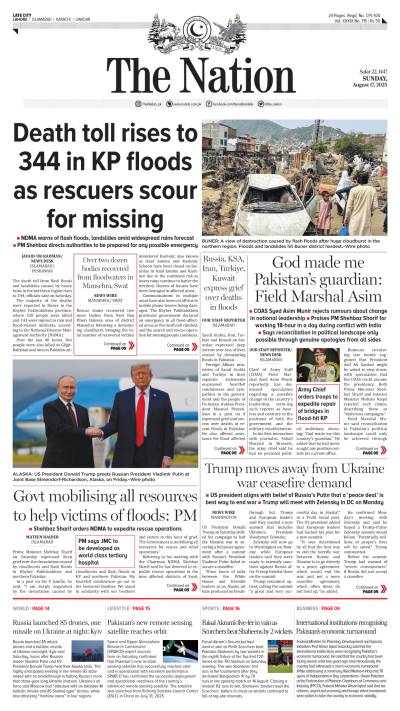LAHORE - Two university students died due to overdose in different hostels last week in Lahore. Initial police investigation revealed that the young men suffered cardiac arrest as they took drugs in excessive quantity.
Drug or ecstasy-related deaths are not rare in this most populated province. According to government estimates, around seven million people in Pakistan are addict to different drugs but activists say the actual numbers could be much higher.
Police last week reported two drug related deaths in Lahore’s Raiwind and Defense areas. One among them was the student of BSc (Honours) at the prestigious Lahore University of Management Sciences (LUMS). Police officers said Shah Mir overdosed and died in the university’s hostel room. The young man arrived in Lahore from Karachi for education but he was found dead under mysterious circumstances during the third year of his university education.
Investigators say a post-mortem would determine the cause of actual death. Apparently, they said, he died either because of heart attack or of drug overdose. Investigators and forensic experts examined the body and they also visited the crime scene. They collected evidences and sent some swabs to the Punjab forensic science agency to ascertain the cause of death.
On the other hand, the university administration issued a notice about the mysterious death. The notice says Shah Mir was found unresponsive in bed in his room on Dec 12. “LUMS administration was called when efforts to rouse him failed. Shah Mir was immediately taken to a nearest hospital (National Defence Hospital) where doctors pronounced that he had expired earlier in the day,” the statement said.
It added that there has since been speculation within the media that Shah Mir’s death was caused by drug overdose. While the cause of death has yet to be determined, the LUMS administration would like to make clear that it recognises that drug and substance abuse is a real challenge plaguing educational institutions and society at large, and that this issue is taken extremely seriously.
“LUMS has a zero tolerance policy against all intoxicants and has regular vigilance and oversight to prevent availability of drugs and illegal substances on campus," said the statement released by the institution.
Further denying the availability of any drugs or illegal substances on the campus, LUMS in its statement claimed that there are two layers of security and hostel staff. “Infractions are reported and dealt with according to procedures that are transparent and documented.”
The second death was reported in Raiwind police vicinity. A medical student was found dead at a rented apartment in a residential colony located near the university campus. Police investigators said the young man overdosed and died.
A few weeks ago, forensic investigation revealed the PML-N worker, Samia Chaudhry, died after taking narcotics including cocaine in excessive quantity. The 38-year-old political worker overdosed and died in the Lahore’s Chamba House where she had been staying for weeks. The Punjab forensic science agency submitted its reports to the Lahore police investigators. The report revealed the lady died “because of taking narcotics in excessive quantity”.
According to insiders, the trend of using narcotics for pleasure is becoming popular among the political elite and students of colleges and universities. Police sources say several state-run guesthouses, hotels, and hostels have become safe haven for smugglers of narcotics.
According to a study conducted by The Nation last year, eleven young men overdosed and died within months in the same Mozang neighbourhood of Lahore after injecting ketamine and sossigon bought over the counter at local drug stores. There is however no official data available to assess the exact number of Ketamine users in Lahore.
Ketamine is a powerful sedative commonly used as an animal tranquiliser but has become popular in recent years as a ‘rave drug’ in Western nightclubs where it is also known as ‘Special K’. If used at higher doses it is known to cause high blood pressure and psychosis. In Lahore, it is freely available in medicine stores for just 80 rupees.
Some families of those killed by the drug had demanded action to curb sale of the drug and strict checks to make sure only those with genuine prescriptions are allowed to buy it. They told The Nation that lack of forensic tests on overdose victims suggested the numbers killed by the drug, and another known as Sossigan, could be far higher.
Lahore is divided into six police divisions on administrative grounds. The city police division which also comprises walled city is the most drug infested town. Inside the Lahore’s old city, drug-pushers are seen selling narcotics in streets like candy or sweets.
Hundreds of dealers are openly peddling narcotics, mostly Charas and opium, from the city police division. Tibbi City, Gowalmandi, Yakki Gate, Ravi Road, Lorry Adda, Badami Bagh, Shafiqabad, Nolakha, Taxali Gate, Mochi Gate, Data Darbar, Shadbagh, Misri Shah, and Shahdara areas have become safe haven for drug pushers.
Ironically, these localities are also known as the worst-hit places in Lahore as far as drug addiction is concerned. The narcotics smuggled to Lahore from Khyber Pakhtunkhwa province, is first supplied to the dealers in such areas from where they push the stuff to the underground markets in Lahore and other districts of the province. In the Punjab capital, tons of narcotics are supplied to dealers who freely sell the stuff in connivance with the local police round-the-clock.
At least 30 drug addicts are found dead in different parts of the metropolis every week, according to rescue workers. Both the government and educational institutions need to launch a fresh campaign to educate the young generation about drug or ecstasy-related deaths in order to save previous lives. The law enforcement agencies should also intensify crackdown on drug dealers to make Lahore a drug free city.








